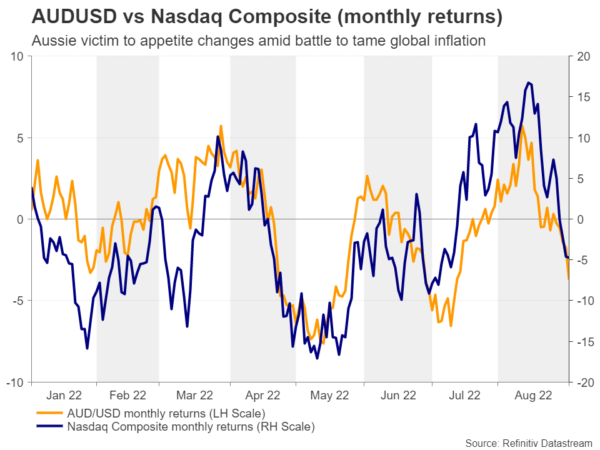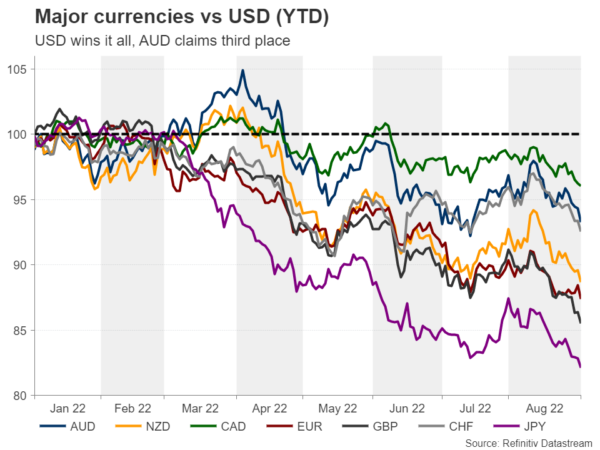With the Australian economy performing relatively well compared to others and inflation rising to its highest in 21 years, the Reserve Bank of Australia (RBA) is all but certain to hike interest rates when it meets on Tuesday, with the decision scheduled to be announced at 04:30 GMT. That said, the big questions on investors’ minds are by how much will officials raise rates, and what could that mean for the Australian dollar.
RBA signals willingness to hike more
At its latest gathering, the RBA decided to lift its cash rate by 50bps, adding that it will take further steps in normalizing monetary conditions, by emphasizing its priority of bringing back inflation to the 2-3% target range, while keeping the economy on an even keel.
This makes it crystal clear that they will most probably raise rates again on Tuesday, but to get an idea with regards to how much, one must dig into their own forecasts. Their latest projections suggest that inflation will continue rising this year, slowing to a little above 4% in 2023, and touching the upper bound of their target range in 2024. Combined with the fact that they expect their economy to continue growing strongly this year, they may not hesitate to hike by another half percentage point.
Can another 50bps help the aussie?
This is what the majority of market participants believe as well, as they assign a nearly 65% probability for such an action, with the remaining 35% pointing to a quarter-point increase. Indeed, with the headline CPI rising to 6.1% in Q2, and the Melbourne Institute projecting that it will stay near those levels in a year’s time, a 50bps hike may be even more likely than the aforementioned probability suggests.
A double hike could lift somewhat the Australian dollar but not much, as this seems to be the base-case scenario. Traders may place more emphasis on the accompanying statement for clues as to how the Bank is planning to move forwards, even if it does not publish updated economic projections this month. Although investors expect another half-point hike on Tuesday, they forecast a path of quarter-point increments from there onwards, and they see a peak at around 3.9% in May. Therefore, for the aussie to gain notably, the Bank may have to appear brave enough to continue with a few more double hikes.
Yet, in a risk-averse environment, the risk-linked aussie may find it hard to sustain any gains against its US counterpart. Not only does the Fed appear to be more aggressive than the RBA, but China’s economic risks amid a resurgence of COVID and a battered property sector are adding to fears over a global recession. China is Australia’s main trading partner, which makes the aforementioned risks more severe for the Australian currency.
Hard to beat US dollar, but not yen, euro, and pound
Aussie/dollar could rebound above 0.6860 in case of a double hike, but any recovery may remain limited near the high of August 26, at 0.7010. The bears could take charge from there and aim for the 0.6680 territory, defined as a support by the low of July 14. A break lower would confirm a lower low on bigger timeframes and perhaps target the psychological area of 0.6500, which marks the low of May 22, 2020.
A first sign of a potential reversal may be a break above 0.7135. Aussie/dollar would be above the 200-day EMA and may initially advance towards the high of June 3 at 0.7285. Should the bulls overcome that zone as well, then we could see them marching towards the peak of April 21 at 0.7455.
Having said all that though, despite the aussie possibly turning south again against its US counterpart due to risk aversion, it can keep outperforming currencies whose nations are facing bigger recession risks. Those include the euro and the pound, and those whose central banks are stubbornly sticking to an ultra-loose policy, like the yen. After all, year to date, the Australian dollar has been the third best performing currency behind the US and Canadian dollars.


















